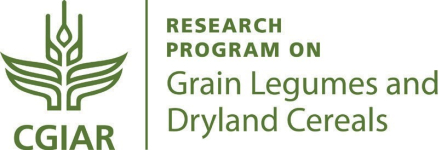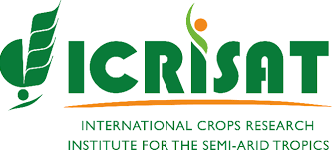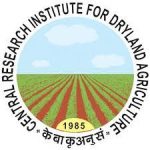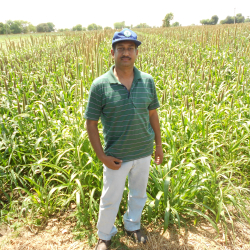Impact of ICRISAT Pearl Millet Hybrid Parents Research Consortium (PMHPRC) on the Livelihoods of Farmers in India
Published on: April 4, 2019, Submitted by Neena Jacob on: April 4, 2019, Reporting year: 2018
ICRISAT commissioned third-party evaluation in 2015 to assess on-farm impact of pearl millet hybrids developed by Pearl Millet Hybrid Parents Research Consortium (PMHPRC) members during 2000-2010 (based directly or indirectly on ICRISAT breeding lines) in India. The study covered 563 pearl millet growers spanning 57 villages, 25 mandals from three states (Rajasthan, Gujarat and Uttar Pradesh) in India. The study revealed that PMHPRC hybrids covered about 60% of pearl millet hybrid area in the 3 states during 2013-14.
Pearl millet farmers in the field
ICRISAT established the Hybrid Parents Research Consortium (HPRC) for pearl millet in 2000-2001 to strengthen the Public Private Partnership (PPP) model, under which companies pay fees for access to parent materials to develop better hybrids. The impact of HPRC on the development of hybrids through extensive use of parental lines by the members was studied in the HPRC-I study. As a logical follow up to it, ICRISAT commissioned the present study to estimate the coverage of the pearl millet area by the HPRC hybrids (hybrids based directly or indirectly on ICRISAT bred hybrid parents) in the field and to assess the impacts in terms of the cost saving to the farmers resulting from high yields when compared with the non-HPRC hybrids. This study was conducted with a sample of 563 pearl millet growers from the three major pearl millet growing states of Rajasthan, Gujarat and Uttar Pradesh.
The patterns of first adoption across states revealed that the initial adoption lag to reach the peak level of adoption was estimated at 4-5 years. The hybrids exclusively preferred by farmers were sustained in the market for about 9-10 years. It was estimated that the HPRC hybrids covered 59.5% of the pearl millet area in these states during 2013-14. However, the extent of area covered by HPRC hybrids was 75% in Gujarat, while it was 49% in Rajasthan and 62% in Uttar Pradesh. They yielded much higher grain and fodder yields than the hybrids replaced by them and the non-HPRC hybrids. They gave much higher benefit-cost ratios than the hybrids replaced and non-HPRC hybrids. Farmers reaped substantial private benefits by the adoption of HPRC hybrids.
Besides the private benefits, the social benefits were also substantial. HPRC hybrids succeeded in reducing the unit cost of production to the farmers by US$ 3.46 in Gujarat, US$ 2.49 in Rajasthan and US$ 1.97 in Uttar Pradesh per quintal (100 kg) of grain produced. The social benefits due to HPRC hybrids were estimated at US$ 39.5 million in Gujarat, US$ 55.2 million in Rajasthan and US$ 39.0 million in Uttar Pradesh per year. The total benefits from HPRC hybrids could surpass US$ 150 million per year, if the HPRC hybrid coverage in other states is also considered. But all these social benefits do not accrue to the farmers alone. Due to low income and price elasticity of demand, most of the social benefits accrue to the consumers.
Stage of Maturity and Sphere of influence
-
Stage of Maturity: Stage 3
-
Contributions in sphere of influence:
Acknowledgement
The activity has been conducted by the International Crops Research Institute for the Semi-Arid Tropics (ICRISAT), in collaboration with the Pearl Millet Hybrid Parents Research Consortium (PMHPRC), Indian Council of Agricultural Research (ICAR), the Regional Remote Sensing Center (RRSC), the Nagubadi Research Services, India, in the framework of the CGIAR Research Program on Grain Legumes and Dryland Cereals (GLDC).






